Editors’ Picks




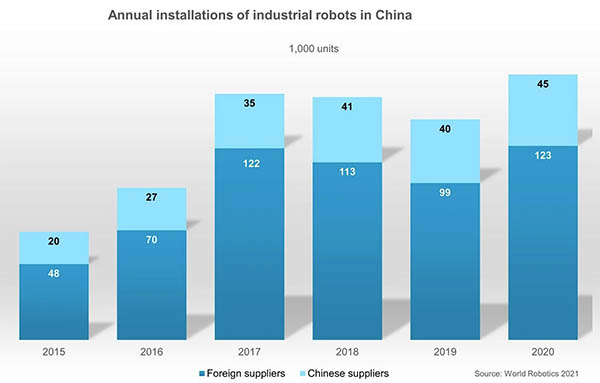
Found in Robotics News & Content, with a score of 32.13
…sights on becoming the biggest innovator and producer of robotics, reported the International Federation of Robotics today. “China is by far the biggest robot market in the world regarding annual sales and the operational stock,” said Milton Guerry, president of the International Federation of Robotics (IFR). “IFR's robot density statistic is a useful indicator of China's dynamic developments, counting the number of industrial robots per 10,000 employees. China´s robot density in the manufacturing industry currently ranks ninth globally (246 units), compared to 25th (49 units) just five years ago.” China's latest five-year plan for the robotics industry, released by the…
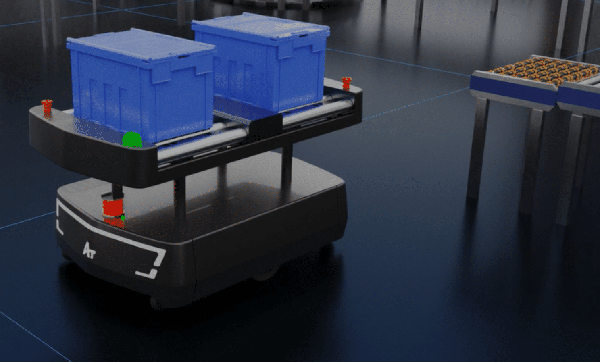
Found in Robotics News & Content, with a score of 19.04
…Addverb Technologies Pvt., investing $132 million (U.S.) in the robotics provider. Noida, India-based Addverb said it plans to use the funding to expand manufacturing and its presence in Europe, Australia, and the U.S. Sangeet Kumar, co-founder and CEO of Addverb, said the company will remain independent and will build “the world's largest” robot factory to expand its production from 10,000 to 50,000 units annually. Founded in 2016, Addverb's technologies include machine learning, deep learning, computer vision, and the Internet of Things (IoT). The company began with a pallet shuttle for dense racking storage. Addverb's product line now includes the Dynamo…
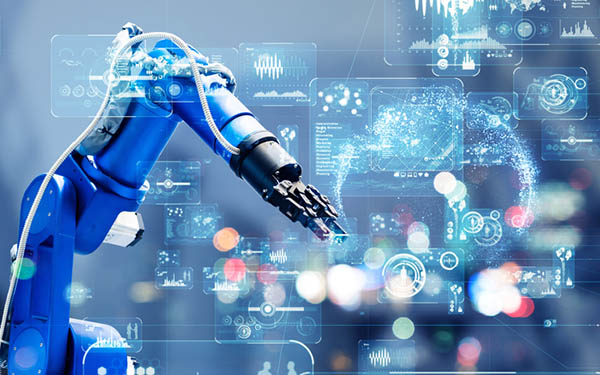
Found in Robotics News & Content, with a score of 15.51
…now is a good time to reflect on recent robotics trends, in terms of growing global demand in the face of worker shortages and supply chain challenges. It's also a time to gaze into the proverbial crystal ball to see how automation will continue to develop to serve industry needs. Robotics 24/7 asked the following thought leaders among robotics associations, end users, and suppliers about their thoughts: Susanne Bieller, general secretary of the International Federation of Robotics (IFR), the top organization reporting on global industrial usage Tom Ryden, executive director of MassRobotics, an organization dedicated to growing the Massachusetts robotics…
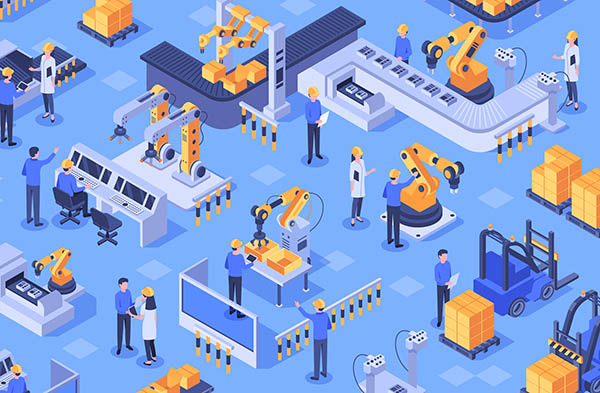
Found in Robotics News & Content, with a score of 12.55
…automation to improve efficiency and mitigate widespread labor shortages. Robotics 24/7 asked the following thought leaders among robotics associations, end users, and suppliers about their thoughts: Susanne Bieller, general secretary of the International Federation of Robotics (IFR) Tom Ryden, executive director of MassRobotics Suzy Teele, vice president of strategic initiatives and outreach at the Advanced Robotics for Manufacturing (ARM) Institute Aaron Prather, senior technical advisor at FedEx Express Fergal Glynn, vice president of marketing at 6 River Systems Lior Elazary, founder and CEO of inVia Robotics This week, we start with looking back at some of the biggest robotics trends…
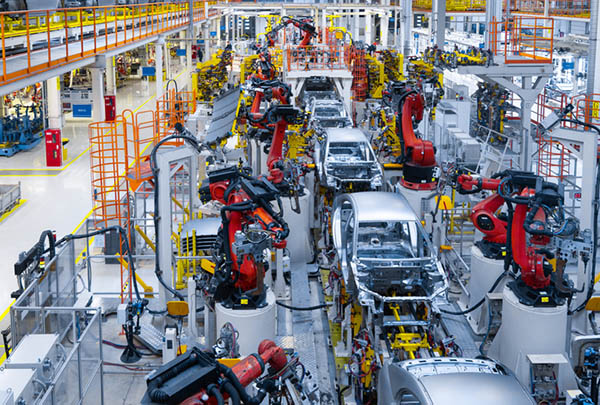
Found in Robotics News & Content, with a score of 31.97
…around the world has continued to accelerate, said the International Federation of Robotics today. The average robot density is now 126 robots per 10,000 employees in manufacturing – nearly double the number of 66 units in 2015, according to the “2021 World Robot Report.” By regions, the average robot density in Asia/Australia is 134 units, in Europe 123 units, and in the Americas 111 units. The top five most automated countries in the world are South Korea, Singapore, Japan, Germany, and Sweden, according to the International Federation of Robotics (IFR). “Robot density is the barometer to track the degree of…

Found in Robotics News & Content, with a score of 23.15
…new technologies and industries. According to four experts in robotics in automation, the European Commission's proposed AI Act and updated machinery regulations could cause severe damage to European small businesses and robotics companies of all sizes. They today called on European policymakers to review and amend the proposals. The new regulations would require machinery using software that could be classified as artificial intelligence to be certified by third parties for safety, adding what the industry and technology experts said is an unacceptable burden on business. The European Commission's proposed regulations may be intended to protect safety and create a harmonized…
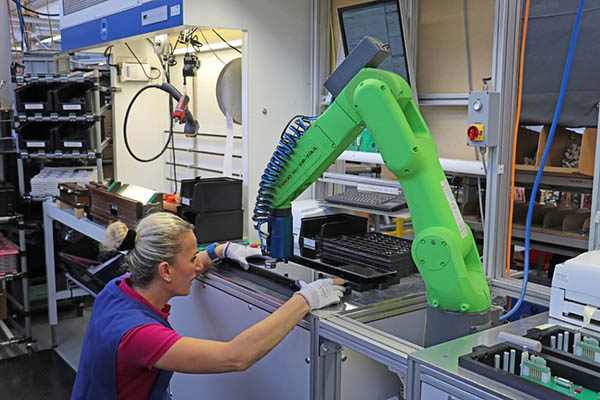
Found in Robotics News & Content, with a score of 41.21
…sales of industrial robots grew in 2020, reported the International Federation of Robotics today. The number of robots operating in factories worldwide increased by 10% to a total of 3 million, according to the World Robotics 2021 Industrial Robots report. Sales grew a mere 0.5% last year, with 383,500 units shipped globally. The growth in China offset the contractions of other markets, said the IFR. The past year was the third most successful year in history for the robotics industry, following 2018 and 2017. Annual turnover of robots was more than $50 billion last year, including software and peripherals but…
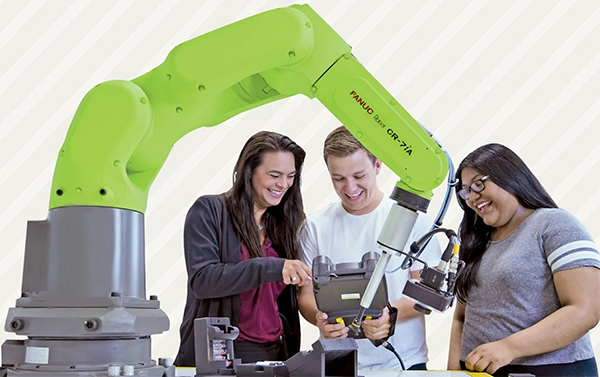
Found in Robotics News & Content, with a score of 34.60
…3 million units worldwide in 2020, according to the International Federation of Robotics. The IFR last week said it has researched how robotics training can shape workforce education and enhance skills development, both now and in the future. “Automating dull, dirty, and dangerous tasks is changing job profiles of factory workers for the better,” said Milton Guerry, president of the IFR. “Academies run by robot manufacturers play a key role in making this transition possible. Employers send thousands of workers to robotics training every year.” Manufacturers lead robotics training efforts Robot manufacturers such as ABB, FANUC, and KUKA all register…

Found in Robotics White Papers & Archives, with a score of 49.35
Robotics 24/7 has been tracking how manufacturers, designers, integrators, and suppliers are looking to automation to augment human capabilities as labor shortfalls persist. In this issue, we share insights from both the International Federation of Robotics and the Association for Advancing Automation. Their data provides some cause for optimism. At the same time, robots are only as good as the people working with them, the software controlling them, and the data that they yield for business decisions. This Special Focus Issue looks at retraining efforts, robots in metalworking, and the importance of precise motion control for emerging applications. Most robots…
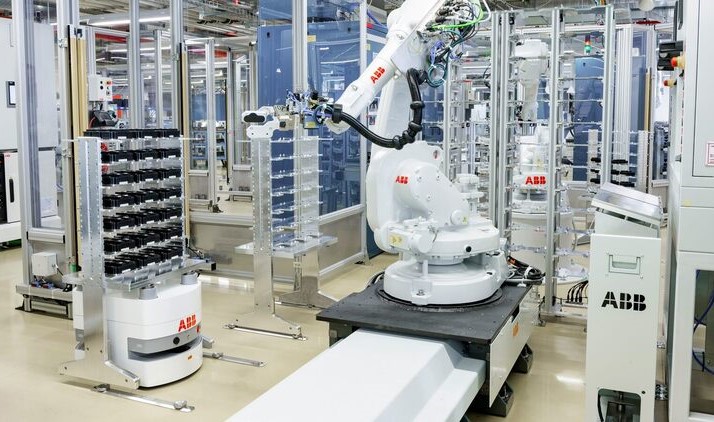
Found in Robotics News & Content, with a score of 44.53
While industrial automation in factories has been thoroughly studied, robotic mobility is also booming worldwide, according to the International Federation of Robotics. In its new research paper, “A Mobile Revolution,” the IFR predicts that unit sales of autonomous mobile robots, or AMRs, in the logistics sector will increase by 31% annually between 2020 and 2023. The Frankfurt, Germany-based IFR was established as a nonprofit organization in 1987. It promotes research, development, usage, and global cooperation across the field of robotics and business and government. The IFR's more than 70 members come from the robotics industry, national and international associations, and…
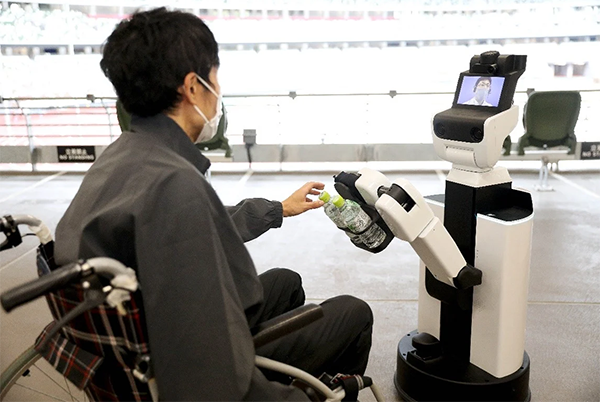
Found in Robotics News & Content, with a score of 23.10
…smoothly, and Japan hopes to demonstrate its sporting and robotics prowess to the world. “The Tokyo Games will prove just how useful robots can be,” said Filipe Oliveira, a senior analyst in the Thematic Team at GlobalData. “Robotics is a fast-growing industry, and by showcasing new technology at the Olympics, the Japanese government can remind the world that it remains a technology powerhouse.” Japan is the world's leading exporter of robots, accounting for 47% of the global supply, according to the International Federation of Robotics (IFR), down from 52% in 2017. The country also has one of the highest robot…

Found in Robotics News & Content, with a score of 26.70
…by China. China is poised to dominate the industrial robotics market of the future, due to its national plan for technological supremacy and the billions of dollars its government has invested in critical technologies, compared with the U.S.’s focus on private-sector development. The “Made in China 2025” plan started as a 10-year vision of shifting China from a low-end manufacturer to a high-end producer of goods, with the intent of making China dominant in global high-tech manufacturing. This requires Beijing to transition the country’s existing manufacturing infrastructure and labor market toward research and development, technological innovation, and specialized production. The…



